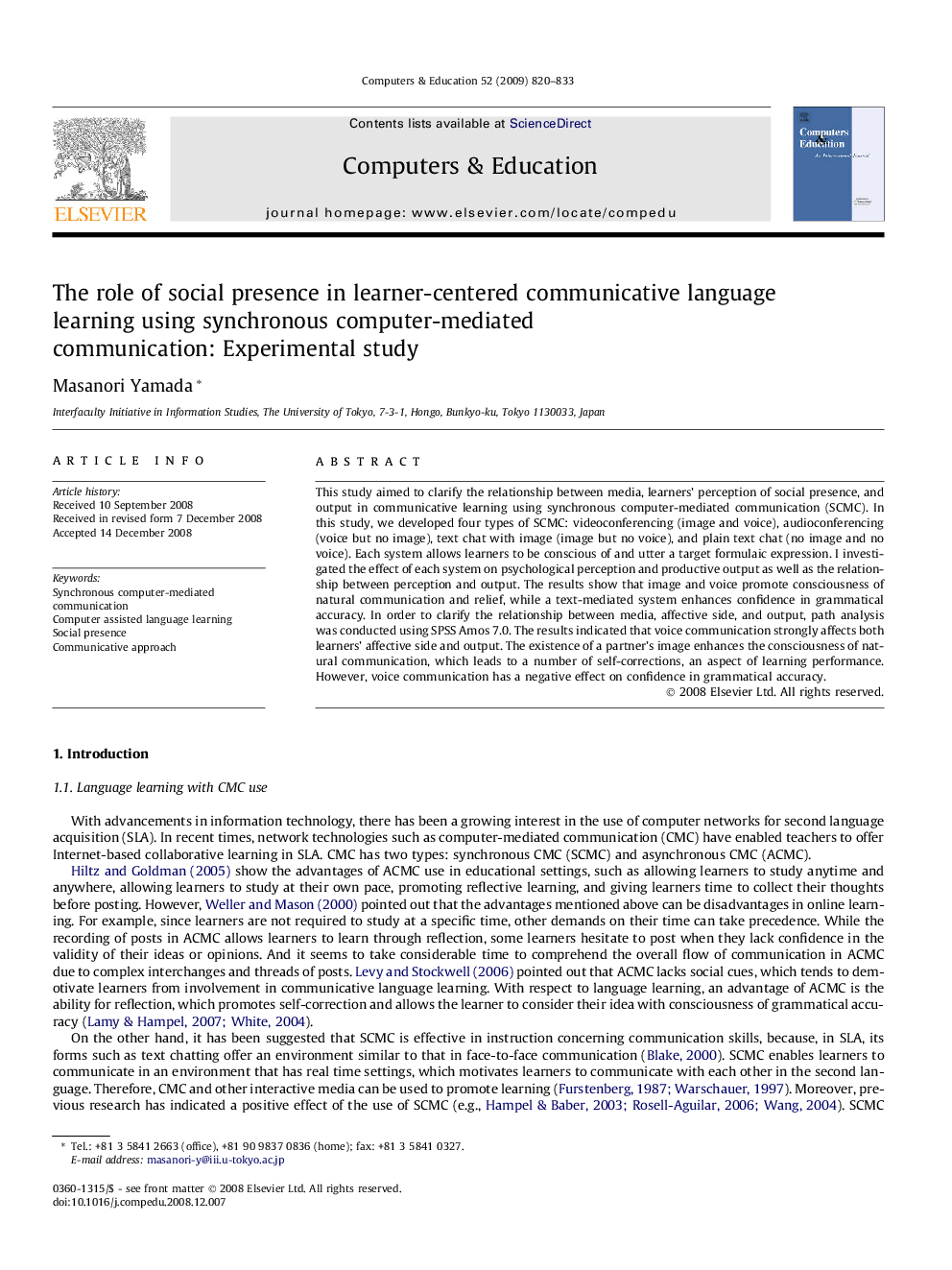| Article ID | Journal | Published Year | Pages | File Type |
|---|---|---|---|---|
| 349491 | Computers & Education | 2009 | 14 Pages |
This study aimed to clarify the relationship between media, learners’ perception of social presence, and output in communicative learning using synchronous computer-mediated communication (SCMC). In this study, we developed four types of SCMC: videoconferencing (image and voice), audioconferencing (voice but no image), text chat with image (image but no voice), and plain text chat (no image and no voice). Each system allows learners to be conscious of and utter a target formulaic expression. I investigated the effect of each system on psychological perception and productive output as well as the relationship between perception and output. The results show that image and voice promote consciousness of natural communication and relief, while a text-mediated system enhances confidence in grammatical accuracy. In order to clarify the relationship between media, affective side, and output, path analysis was conducted using SPSS Amos 7.0. The results indicated that voice communication strongly affects both learners’ affective side and output. The existence of a partner’s image enhances the consciousness of natural communication, which leads to a number of self-corrections, an aspect of learning performance. However, voice communication has a negative effect on confidence in grammatical accuracy.
